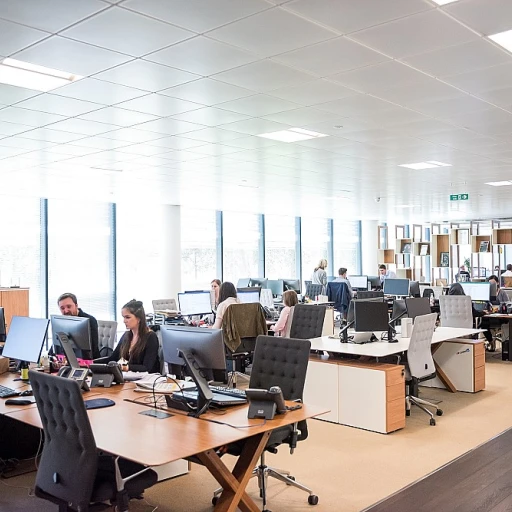The Evolving Nature of Work-Life Balance
Understanding the Shift Towards Work-Life Integration
In recent years, the concept of work-life balance has experienced a significant transformation, evolving from a rigid separation of professional and personal responsibilities into a more fluid and integrated approach. This evolution can largely be attributed to societal changes and technological advancements that continue to blur the lines between work and home life.
With the advent of digital technology, work is no longer confined to the traditional office space or the standard nine-to-five schedule. The ability to work remotely allows employees greater flexibility in managing their tasks, leading to a shift from balancing distinct work and personal life zones to a more harmonious integration. This shift is not just a technological phenomenon but also a reflection of changing attitudes among the workforce, who increasingly value personal time and experiences.
As the desire for improved work-life integration grows, businesses are beginning to recognize the importance of fostering an environment that supports employee well-being. Forward-thinking organizations are adopting policies that accommodate the diverse lifestyles and needs of their employees by encouraging flexible work arrangements and promoting a culture of understanding and support.
However, this evolving nature of work-life balance also presents new challenges. Employees are often caught in the crosshairs of constant accessibility, potentially leading to burnout, which will be discussed in-depth later. Moreover, the dynamic struggle between personal life obligations and work commitments continues to test the efficacy of flexible work arrangements.
Overall, this transformation in how we perceive work-life balance invites both opportunities and challenges as we look towards the future and strive to establish practices that benefit both employers and employees alike. As we navigate these changes, it becomes crucial to continually reassess and adapt our strategies to ensure a healthier, more balanced lifestyle for the workforce of tomorrow.
Impact of Long Work Hours on Health
The Toll of Excessive Working Hours
In the modern era, the ideal of achieving a harmonious balance between work and life often feels elusive. One major obstacle is the prevalence of extended work hours, a trend that presents serious challenges to both physical and mental well-being. As the line between personal life and professional responsibilities continues to blur, the impact of prolonged work hours on health becomes a critical issue.
The human body is not designed to operate under continuous stress without sufficient downtime. Overworking can lead to a multitude of health issues, ranging from chronic fatigue and sleep disturbances to more severe conditions like cardiovascular diseases and mental health disorders. These long hours can create a vicious cycle where decreased productivity and increased errors force individuals to work even more, further straining their well-being.
Moreover, the digital age has amplified the effects of extended work hours. With smartphones and laptops, employees are often expected to be reachable around the clock. This "always-on" culture not only disrupts personal time but also contributes to burnout, a phenomenon increasingly common in today’s professional landscape.
Addressing the health implications of extended work periods is crucial for fostering a sustainable work-life balance. As organizations recognize this, they may begin to delve deeper into flexible working arrangements, a topic explored in subsequent sections of this article. Tackling the challenges presented by excessive working hours will be essential for the future of work-life harmony.
Flexible Working: A Key to Better Balance
Embracing Flexibility for a Healthier Integration
In recent years, the quest for a harmonious work-life balance has driven a significant shift in how we structure our professional lives. One of the most promising avenues to achieve this harmony is by embracing flexible working arrangements. Allowing employees to tailor their work schedules not only accommodates personal commitments, but also fosters a healthier, more satisfying integration of professional and personal life.
The flexibility to work remotely, adjust start and end times, or compress the working week, empowers individuals to align their work commitments with personal responsibilities more seamlessly. This level of autonomy potentially reduces burnout and enhances productivity, as employees can work during their peak performance hours, and take care of personal matters as needed.
Despite the clear benefits, the journey to flexible working isn't without challenges. Organizations must navigate issues of trust and accountability, ensuring that performance standards are met irrespective of where and when the work is done. Furthermore, businesses need to provide the necessary technological tools and support systems that make remote and flexible work possible. To delve deeper into this conversation, explore future trends in employee engagement by visiting
this insightful analysis.
As we move toward a future where the lines between our professional and personal lives continue to blur, it's crucial for both employees and employers to champion flexible work arrangements. This will not only support a better work-life balance but will also drive the evolution of workplace norms and culture.
Personal Life vs. Work Commitments
Negotiating Personal and Professional Pressures
Balancing personal life and work commitments can often feel like walking a tightrope. Individuals are increasingly finding themselves juggling between professional expectations and personal responsibilities, with repercussions on both fronts.
The evolving nature of work-life balance discussed earlier indicates a shift towards more fluid and dynamic approaches. On one hand, there's a push towards achieving career goals and meeting organizational demands, while on the other, there's a genuine need to nurture personal relationships and hobbies that foster mental wellness. As long work hours continue to pose a health risk, employees are beginning to reassess their priorities, striving to achieve a more holistic lifestyle.
Interestingly, the rise of flexible working conditions offers a silver lining, allowing employees to carve out time for personal matters without compromising their work commitments. This flexibility promotes autonomy, empowering individuals to create tailored schedules that accommodate both personal and professional lives. The challenge, however, lies in finding a balance that doesn't sacrifice one for the other.
Organizations that acknowledge the complex balancing act their employees face and provide tangible support contribute significantly to improved work-life harmony. As businesses prioritize mental well-being and work-life balance in their corporate culture, they can benefit from increased employee satisfaction and productivity.
As the future unfolds, the onus will be on both employees and employers to strike a sustainable balance that champions both personal and work commitments, leading to a more fulfilled and content workforce.
Strategies for Cultivating a Healthy Work-Life Environment
Promoting work-life balance within the workplace not only increases employee satisfaction but also enhances productivity, which in turn benefits the organization. Employers are now recognizing the importance of adapting to the evolving expectations of work-life balance as employees seek more autonomy and flexibility.
One strategy is to implement flexible working arrangements, such as remote work or adaptable hours. As we previously highlighted, this flexibility can be instrumental in helping employees manage both their personal and professional responsibilities effectively.
Another crucial element is fostering an inclusive company culture that prioritizes employee well-being. Encouraging open communication can help employees feel more comfortable discussing their needs and any potential work-life conflicts. Employers can also offer resources such as mental health support or workshops on stress management to support their workforce.
Moreover, re-evaluating the existing workload and requiring managers to set realistic expectations can prevent burnout, which we explored in our discussion on the impact of long work hours on health. Transparent performance metrics that emphasize quality over quantity allow employees to concentrate on meaningful tasks without feeling overburdened.
Finally, providing opportunities for professional development is an effective way to promote work-life balance. Employees who feel they are growing and learning in their roles often express higher job satisfaction, even when juggling work commitments with their personal lives.
In this dynamic landscape, it's crucial for organizations to stay adaptive and responsive to the needs of their employees. As we look ahead, the trends in work-life balance will continue to shift alongside changes in the nature of work itself.
The Future of Work-Life Balance: Trends and Predictions
Envisioning Tomorrow’s Harmony Between Professional and Personal Life
As we gaze into the horizon of work-life balance, a more integrative approach is emerging. Companies are increasingly recognizing the importance of fostering a culture that acknowledges the duality of work and personal life as a critical component of employee satisfaction and overall productivity.
Technological advancements are likely to be at the forefront of facilitating this equilibrium. The rise of artificial intelligence and automation could lead to a reduction in monotonous tasks, allowing employees to focus on more meaningful, creative endeavors while potentially enjoying shorter work hours. As discussed earlier, the negative impact of long working hours on health can be significantly mitigated if these technological tools are harnessed effectively.
Moreover, the trend of remote and hybrid work models is here to stay. This will enable individuals to tailor their work environments to better suit their personal needs, fostering a more balanced lifestyle. The flexibility in location and hours can empower employees to harmonize their professional responsibilities with personal commitments, as highlighted in previous discussions on flexible working.
Organizations will need to play a pivotal role in maintaining this balance by reconsidering their KPIs and performance metrics. Instead of valuing presenteeism, there might be a stronger emphasis on outcomes and contributions, allowing employees to pursue interests outside of work while still meeting professional expectations.
Ultimately, the future of work-life balance hinges on continuous adaptation and a collective shift in mindset. Employers and employees alike must be open to evolving expectations and innovative practices that prioritize well-being and productivity. As we continue to explore and adapt, the intersection of work and life will undoubtedly present both challenges and opportunities for growth.






